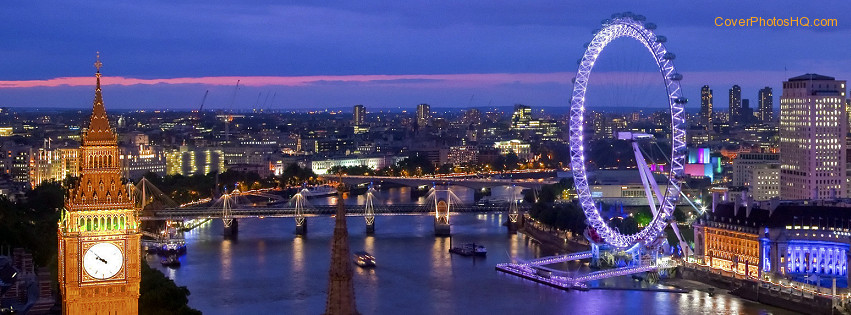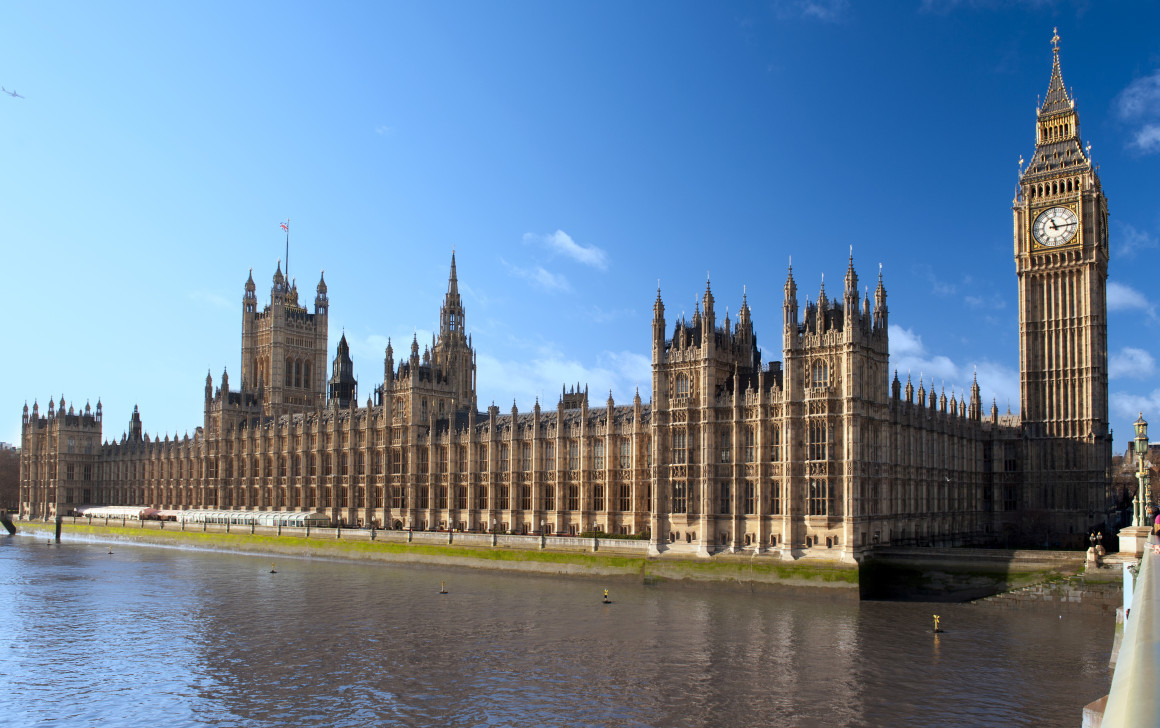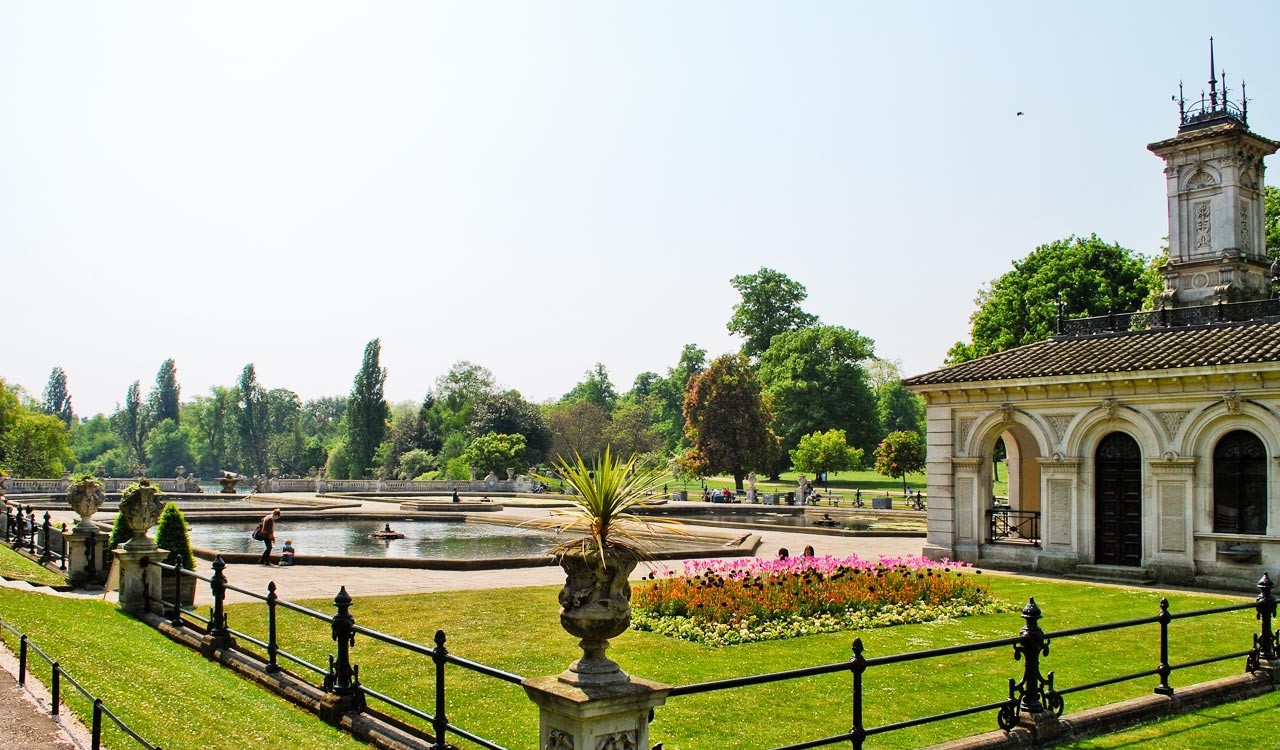Day 2 - Some Sightseeing in London
With the third most international visitors in the world, four UNESCO landmarks, and scores of historical, contemporary and diverse locations.

London offers unparalleled scenery features. Some of the major sightseeing landmarks for a vacation in London are:
Buckingham Palace
The official London residence of Queen Elizabeth II. Developed from a large town house built for the Duke of Buckingham in 1703, the palace became the official royal palace of the British monarch in 1837 and is currently the world's largest operating royal palace. The palace consists of 19 state rooms, 52 principal bedrooms, 188 staff bedrooms, 92 offices and 78 bathrooms. It includes the Royal Collection (priceless furnishings, paintings, fittings and other artefacts), the Queen's Gallery and the daily Changing of the Guard ceremony.
London Eye
The London Eye is a giant Ferris wheel situated on the banks of the River Thames. The entire structure is 135 meters (443 ft) tall and the wheel has a diameter of 120 meters (394 ft).It is the tallest Ferris wheel in Europe, and the most popular paid tourist attraction in the United Kingdom, visited by over 3. 5 million people annually. Built in 1999, it is described by its operators as "the world's tallest cantilevered observation wheel. Since 20 January 2011 and following a three-year sponsorship deal, the London Eye, or Millennium Wheel has been officially named the EDF Energy London Eye. The London Eye is located in the London Borough of Lambeth at the western end of Jubilee Gardens, on the South Bank of the River Thames between Westminster Bridge and Hungerford Bridge.
The British Museum
The British Museum is one of Europe's most famous museum, and London's most popular attraction. It accommodates Ninety four galleries of archaeological finds, prints, coins, antiquities and more. The British Museum is located on Great Russell Street, close to Tottenham Court Road in central London. (address: Great Russell Street, London WC1B 3DG).
Big Ben & The House of Parliament
The name "Big Ben" is generally known to describe the clock tower as a whole. However, "Big Ben" is actually the huge thirteen ton bell that strikes the hour within the tower. The common theory regarding how the bell got his name is that it was named after the Sir Benjamin Hall, a weighty politician of the time, who was First Commissioner of Works and whose name was inscribed on the bell. The Houses of Parliament (also known as The Palace of Westminster), incorporates The House of Commons (which was destroyed in WW2 and rebuilt 1950), The House of Lords and Westminster Hall. The oldest part of the Palace which still exists, Westminster Hall, dates from 1097. The palace originally served as a royal palace and former residence of kings, though no monarch has resided there since the 16th century.

Tower of London
The Tower of London is a historic castle on the bank of the River Thames in central London. It was founded towards the end of 1066 as part of the Norman Conquest of England. The White Tower, which gives the entire castle its name, was built by William the Conqueror in 1078, and was a represented symbol of oppression, inflicted upon London by the new ruling elite. The castle was used as a prison since at least 1100, although that was not its primary purpose. As a whole, the Tower is a complex of several buildings set within two rings of defensive walls and a moat. The Tower of London has played a prominent role in English history. It was besieged several times and controlling it has been a key element for ruling the country. The Tower has served variously as an armory, a treasury, a menagerie, the home of the Royal Mint, a public records office, and the home of the Crown Jewels of the United Kingdom.
Westminster Abbey
A large, mainly Gothic church, in the City of Westminster, located just to the west of the Palace of Westminster. It is the traditional place of coronation and burial site for English monarchs. In addition to the Abbey's rich history, Westminster Abbey has stunning architecture with surrounding Highlights which include a statue of the Virgin Mary holding a baby Jesus, the Nave with the grave of the unknown warrior and the Little Cloister leading the College Gardens. Westminster Abbey is usually open to visitors from Monday to Saturday throughout the year. On Sundays and religious holidays such as Easter and Christmas, the Abbey is open for worship only, All are welcome to services.
Hyde Park
One of the most important parks of Royal Parks' in London, forming one large green lung covering over 600 acres of land. Hyde Park is a popular location for many major events, celebrations and concerts. Sites of interest in the park include Speakers' Corner (located in the northeast corner near Marble Arch), South of the Serpentine, which divides the park into two parts, located the Diana, Princess of Wales memorial, an oval stone ring fountain. To the east of the Serpentine, just beyond the dam, is London's Holocaust Memorial. Another memorial in the Park commemorates the victims of the 7/7 terrorist attacks, in the form of 52 steel pillars – one for each of the dead. A botanical curiosity is the Weeping Beech. Opposite Hyde Park Corner stands one of the grandest hotels in London, The Lanesborough.

Tate Modern
A modern art gallery, in the Bankside area of Central London, and Britain's national gallery of international modern art and part of the Tate group (together with Tate Britain, Tate Liverpool, Tate St Ives and Tate Online). It is the most-visited modern art gallery in the world, with around 4. 7 million visitors per year. Opened in the year 2000, Tate Modern Museum became extremely popular with Londoners and tourists alike as it houses a collection of astounding modern art pieces presented within a building unparalleled in architecture.
Tower Bridge
One of the most famous London attractions, and an iconic symbol of the UK's capitol, the Tower Bridge is a combined bascule, each weighing about 1, 000 tons, and suspension bridge stretching over the River Thames. It is close to the Tower of London, from which it takes its name. The Tower Bridge with its twin drawbridges, from Tower Bridge you can view the HMS Belfast, an 11, 500-ton cruiser which opened the bombardment of the Normandy coast on D-Day. The Tower Bridge is sometimes mistakenly referred to as London Bridge, which is actually the next bridge upstream. The closest London tube station is Tower Hill on the Circle and District lines, and the nearest Docklands Light Railway station is Tower Gateway.
Trafalgar Square
The largest square in London, and a meeting place for centuries, Trafalgar square is an iconic landmark in central London, frequently visited by Londoners and tourists alike. Dominated by the giant 167 feet Nelson's Column, a Statue in honour of Admiral Lord Nelson, commemorating his naval victory over the French fleet at the Battle of Trafalgar in 1805. The square accommodates various activities, events and celebrations take place in Trafalgar square, such as the Royal Wedding, Olympics One Year to Go, New Year's eve celebration, St Patrick's Day as well as political rallies and demonstrations. Trafalgar square also contains a large number of statues as well as two fountains and it is surrounded by many noticeable buildings, churches and museums.

Photo gallery
Content available in other languages
- Italiano: Giorno 2 - Luoghi di interesse a Londra
- Polski: Drugi dzień zwiedzania Londynu
- Français: Jour 2 : Un peu de visite à Londres
- Português: Dia 2 - Alguns passeios turísticos em Londres
- Español: Día 2 - Turismo en Londres
- Türkçe: 2. Gün - Londra Gezisi
- Deutsch: Tag 2 - Sightseeing in London
Want to have your own Erasmus blog?
If you are experiencing living abroad, you're an avid traveller or want to promote the city where you live... create your own blog and share your adventures!
I want to create my Erasmus blog! →



















Comments (0 comments)